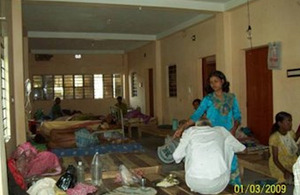DFID Research: Improving equity in Indian health care
Health care research in the Sunderbans will be used to prepare a master health plan for this area and show others how to address disadvantaged populations

In-patient care ward at Informal provider’s hospital
The burden of non-communicable/chronic diseases is substantial among the poor. The poverty dimension of non-communicable diseases makes it a strong candidate for immediate public policy intervention. While public expenditure on health in India has increased in recent times, there is still a lack of equity in utilization of health services due to the absence of a strong pro-poor mechanism of service delivery.
The Future Health Systems (FHS) research programme is generating evidence on equity in health care in order to convert this into policy and action. In India, the research focuses on the Sunderbans area of West Bengal. This area is particularly inaccessible and has a high incidence of poverty. Lack of social protection from the impoverishing effect of health care costs holds back what can be achieved by other poverty-reducing strategies in India. Payment for private health care can have a catastrophic effect on the poor, but FHS research found that a sizable proportion (15% of public clients) of the poor were also paying unaffordable sums for public health facilities.
Some of the findings of the research in the Sunderbans are:-
- the poor are highly vulnerable to health related poverty, even though the state plays a major role in providing healthcare
- there is a weak targeting and inadequate local oversight at the district level
- a unique dualism exists in health markets - with dominance of public sector in inpatient care and uncontrolled private providers in outpatient care
The findings of the study will be used to prepare a master health plan for this area and show others how to address disadvantaged populations. The master health plan will provide customized public health interventions for the Sunderbans’ population based on their need, geographical location and accessibility to health services. As an example of how research can convert into action, findings from a study of informal health care providers has led to them starting to be integrated into the public health system. The master health plan for the Sunderbans area is expected to benefit millions of people in the region by making health care more accessible and affordable.